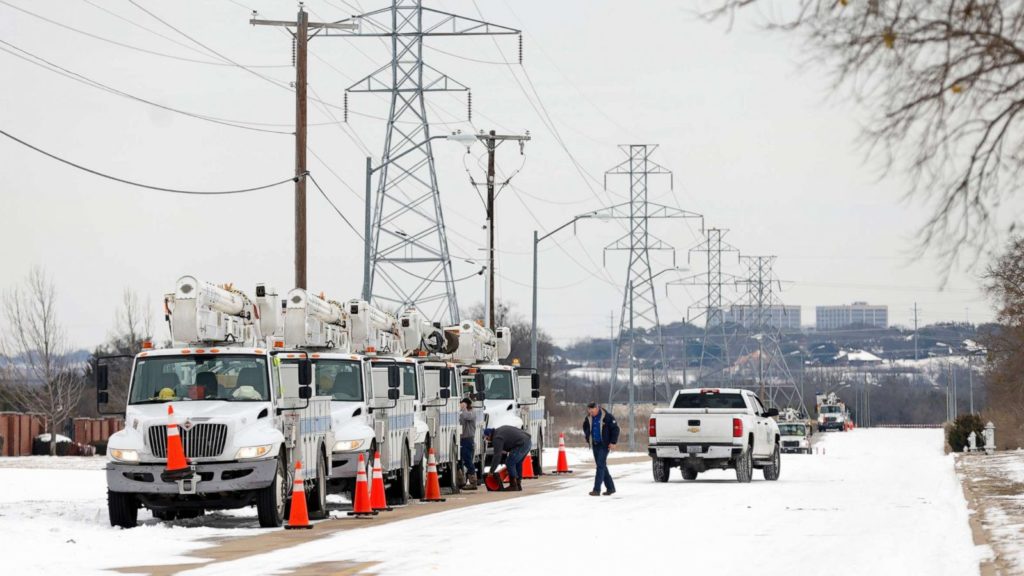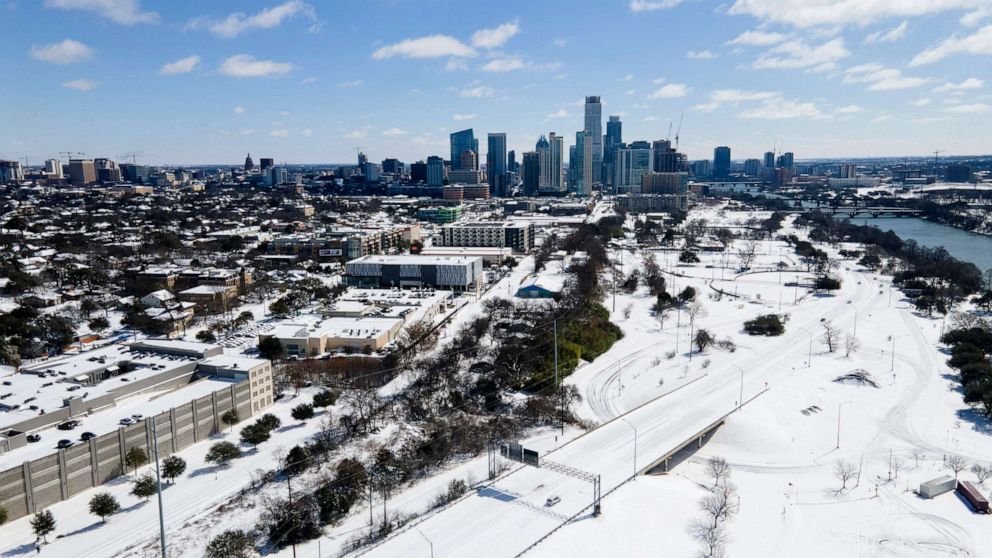
Texas Energy Failure Explained
There is a ton of information (and misinformation) about the current crisis in the southern United States, specifically around the Texas energy crisis. Our energy experts examined the facts, emerging stories and popular rhetoric surrounding these events to help you understand what it all means.
What Happened in Texas?
A devastating winter storm recently plunged Texas into an energy crisis. And, while tragic, it does offer warning signs for the U.S. as the Biden administration seeks to prepare for a future in which the electricity grid’s power comes almost entirely from renewable energy and is prepared for increasingly inclement weather.
With millions still without power amid frigid temperatures, some commentators have falsely placed blame on wind turbines and solar energy.
“We should never build another wind turbine in Texas,” read a Tuesday Facebook post from Texas Agriculture Commissioner Sid Miller. “The experiment failed big time.”
“This is a perfect example of the need for reliable energy sources like natural gas & coal,” tweeted U.S. Sen. Steve Daines, a Republican from Montana, on Tuesday.
In reality, failures in fossil fueled energy—natural gas, coal and nuclear energy systems—were responsible for nearly twice as many outages as frozen wind turbines and solar panels, the Electric Reliability Council of Texas (ERCOT), which operates the state’s power grid, said in a press conference.
The Role of Renewables in Texas Energy Crisis
Contrary to a wave of critics who tried to falsely pin blame for the situation on renewable energy, wind and solar played only a minimal role in the sudden power shortage, utility officials said.
The cold can and did cause ice to build up on wind turbine blades, limiting their ability to produce electricity. Turbines, however, installed in colder climates are routinely equipped with warming systems that stop ice build-up. Either way, wind and solar still only have relatively minor roles in the Texas energy grid. Regardless, some are calling for additional efforts to winterize this equipment after natural gas, coal and other energy sources experienced freezes.
Still, the crisis in Texas exposes how the U.S. infrastructure may not be fully prepared to absorb such drastic climate-related spikes in energy demand.
The challenge is likely to grow as the U.S. relies more on wind and solar power. This comes as a result of relying on what experts call “intermittent” sources. These are sources whose output rely heavily on the weather and do not produce electricity 24 hours a day.
The picture of what went wrong in Texas is incomplete. But while some wind generators did go offline as turbines iced over, the ERCOT said the shortage was driven by a failure not of renewable sources but of traditional “thermal” sources.
Understanding The Texas Energy Grid
The brutal winter storm that left millions without power along the U.S. Gulf Coast and caused prices to surge has highlighted the differences between Texas’ independent power grid and that of the rest of the United States.

Texas produces and consumes more electricity than any other state, but it is the only state in the continental United States that runs a stand-alone electricity grid. This was designed to keep the state’s energy system independent and isolated from other markets.
The problem? It means during critical weather events, most of Texas cannot connect to other grids, which can draw from each other.
Overall, around 4.4 million customers lost power.
The Texas grid is not subject to federal oversight and is largely dependent on its own resources, according to the U.S. Energy Information Administration.
“They don’t have the infrastructure connected outside of Texas that might allow them to bring in imports of energy,” said another source familiar with ERCOT and electric markets.
Unlike other U.S. electric grid operators, ERCOT does not have a capacity market to handle events like the freeze. Instead, regulators use scarcity pricing to ensure reliability, but that can cause real-time prices to soar due to shortages, economists said.
Backup Batteries
Generating energy is one challenge. However, an equally daunting task centers on storing power from renewable energy for extreme events like the one hammering Texas.
Texas’ massive energy crisis didn’t have to happen—and it doesn’t have to happen again. Energy companies and state employees alike can start working on solutions now that could prevent future blackouts. However, unless they get to work fast, it will still face risk of vulnerability.
When connected to batteries and smart grids, renewable energy sources can provide consistency on par or even better than the fossil-fueled system currently used. And, by investing in backup battery solutions across the state, experts can create microgrids to stave off potential blackouts.
Leveraging solar energy production with battery-backed microgrids, states like Texas could avoid future catastrophes. As a result, energy officials could appropriately allocate resources and ensure fewer rolling blackouts and impacted homeowners.
How To Prepare
The events related to the Texas energy crisis should come as a wake up call for everyone. Finding ways to ensure protection against blackouts and outages should be top-of-mind for everyone. Luckily, companies like NRG Clean Power offer a straightforward solution: solar and batteries.
In the event of a power failure, the system automatically switches from the grid. It will then start to draw power from the backup battery system. If the power fails, your backup system can step in and supply power until your utility restores the main system.
When you connect your home battery to a solar system, it will refill as soon as the sun comes out. Yes, even in the winter.
When combined with solar, you can send it back to the grid and use every drop of sunlight as power. With a battery backup, you can enjoy all the benefits of a grid-connected solar system while still having power in the event of power outages. Perhaps the best part—you still have the same reliability with the home battery backup as with a traditional power system.
Don’t waste any more time. Protect your family and your home from an energy crisis by installing a solar and battery solution.

Authored by Ryan Douglas
NRG Clean Power's resident writer and solar enthusiast, Ryan Douglas covers all things related to the clean energy industry.

